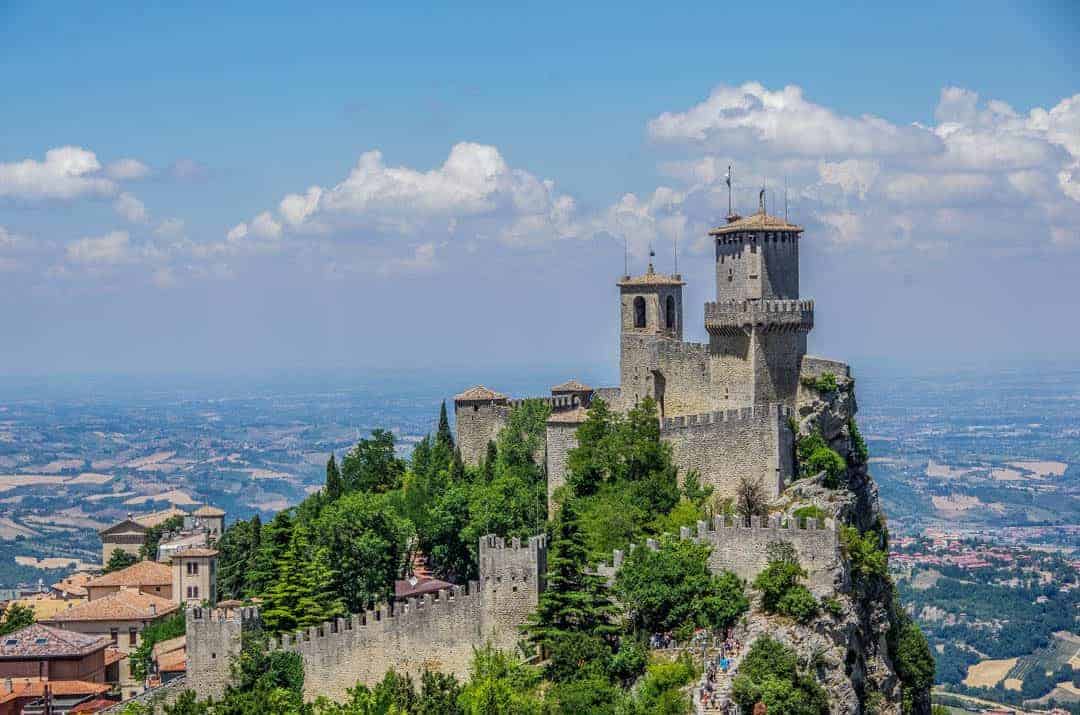Overview of San Marino
San Marino is a small independent microstate located in southern Europe, entirely surrounded by Italy.
Geography: San Marino is situated on the eastern side of the Apennine Mountains, with its highest point being Mount Titano. It covers an area of just over 61 square kilometers (24 square miles), making it the fifth smallest country in the world.
History: San Marino claims to be the oldest surviving sovereign state and constitutional republic in the world, with its origins dating back to the 4th century. It was founded by Saint Marinus, a Christian stonemason who sought refuge on Mount Titano. Over the centuries, San Marino maintained its independence, even during times of political turmoil in the surrounding regions.
Government: San Marino is a parliamentary republic. The country has a unique political system with two co-captains serving as heads of state. The Captains Regent, elected every six months, lead the country alongside the Grand and General Council, which is the legislative body.
Population: San Marino has a population of around 34,000 people as of my knowledge cutoff in September 2021. The majority of the population is of Sammarinese descent, with Italian being the official language. Italian culture heavily influences the country.
Economy: San Marino’s economy is primarily based on tourism, finance, and the sale of collectible stamps and coins. The country’s picturesque landscape, historic sites, and duty-free shopping attract visitors from around the world. It also benefits from its status as a tax haven and financial center.
Culture: San Marino has a rich cultural heritage influenced by Italian traditions. The Sammarinese people take pride in their history and customs. Traditional festivals and events, such as the Feast of Saint Marinus, are celebrated throughout the year. The country also has museums, art galleries, and historic sites that showcase its cultural heritage.
Tourism: Tourism plays a significant role in San Marino’s economy. Visitors come to explore the medieval old town of San Marino City, a UNESCO World Heritage Site, and enjoy the stunning panoramic views from Mount Titano. The country’s duty-free shopping, historic landmarks, and charming streets attract tourists from nearby regions.
Landmarks: San Marino City is the capital and main city of San Marino. The city is known for its well-preserved medieval architecture, including the three iconic towers: Guaita, Cesta, and Montale. Other notable landmarks include the Palazzo Pubblico, Basilica di San Marino, and the State Museum.
Safety: San Marino is considered a safe destination with low crime rates. It enjoys political stability and maintains good relations with its neighboring countries.
Please note that the information provided is based on my knowledge cutoff in September 2021, and there may have been developments since then.

Comment (0)